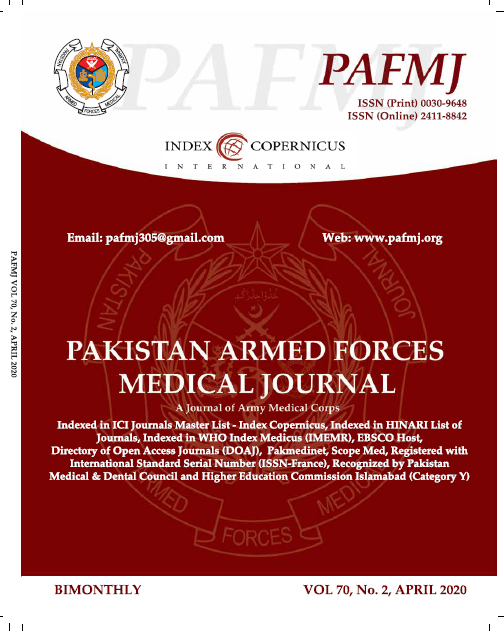THERE’S ONLY ONE KING AND YOU ARE NOT HIM” FOLLOWERSHIP STYLES OF MEDICAL RESIDENTS IN PAKISTAN
Keywords:
Culture, Followers, Followership styles, Kelley’s followership stylesAbstract
Objective: To compare cross-cultural followership styles of resident trainees.
Study Design: Cross-sectional quantitative study.
Place and Duration of Study: Followership styles of trainees in four provinces of Pakistan, from Jun 2019 to Dec 2019.
Methodology: The survey of 300 resident trainees was done by direct administration of survey packets in the respective institutes. It included, consent form, demographic survey, return envelope and Kelley’s followership survey forms. The participants responded to each question. They were instructed to respond to a question with information that was to the best of their knowledge in the event that they were uncertain of its answer.
Results: Total 281 medical trainees participated in the survey. The age ranged from 20 years to 54 years with mean age of 30.62 ± 4.87 years. A total of 139 (49.5%) males and 142 (50.5%) females participated in the study. One hundred and fifty six (55.5%) from civil hospitals and 125 (44.5%) from military hospitals. Most frequent followership style was pragmatist, 62 (44.6%) in male and effective, 64 (45.0%) in females. Effective followership style was most frequent in Hyderabad 14 (50%), Karachi 16 (61.5%), Lahore 18 (35.2%) and Quetta 19 (46.3%). Peshawar had equal effective and pragmatist styles i.e. 29 (42.6%) whereas, in Rawalpindi most common style was pragmatist 33 (41.7%).
Conclusion: This article provides new understandings of the multiple ways in which followership is experienced in the healthcare workplace in different cultural settings. Understanding the follower will have the purpose to educate leaders how to be more effective.











